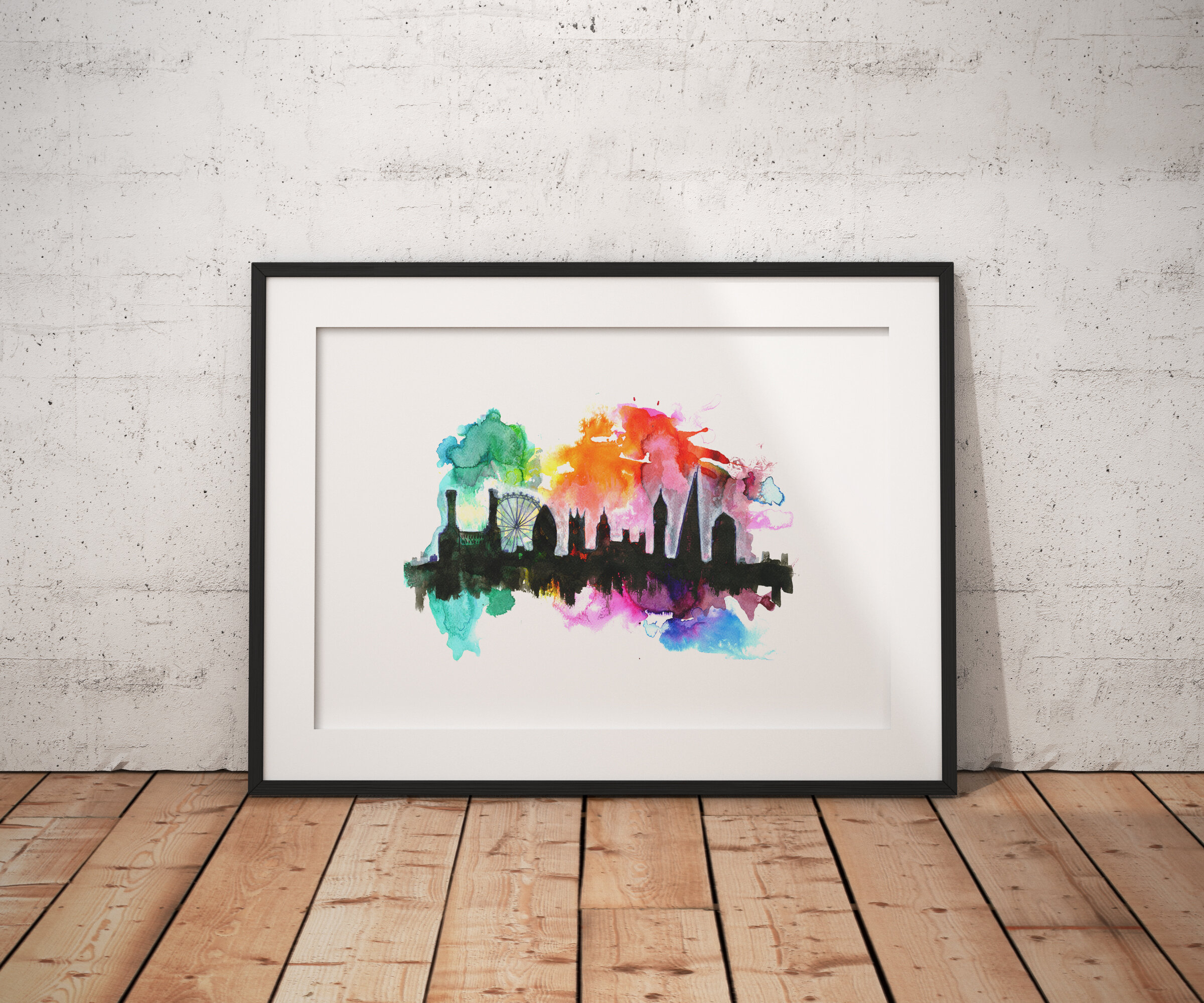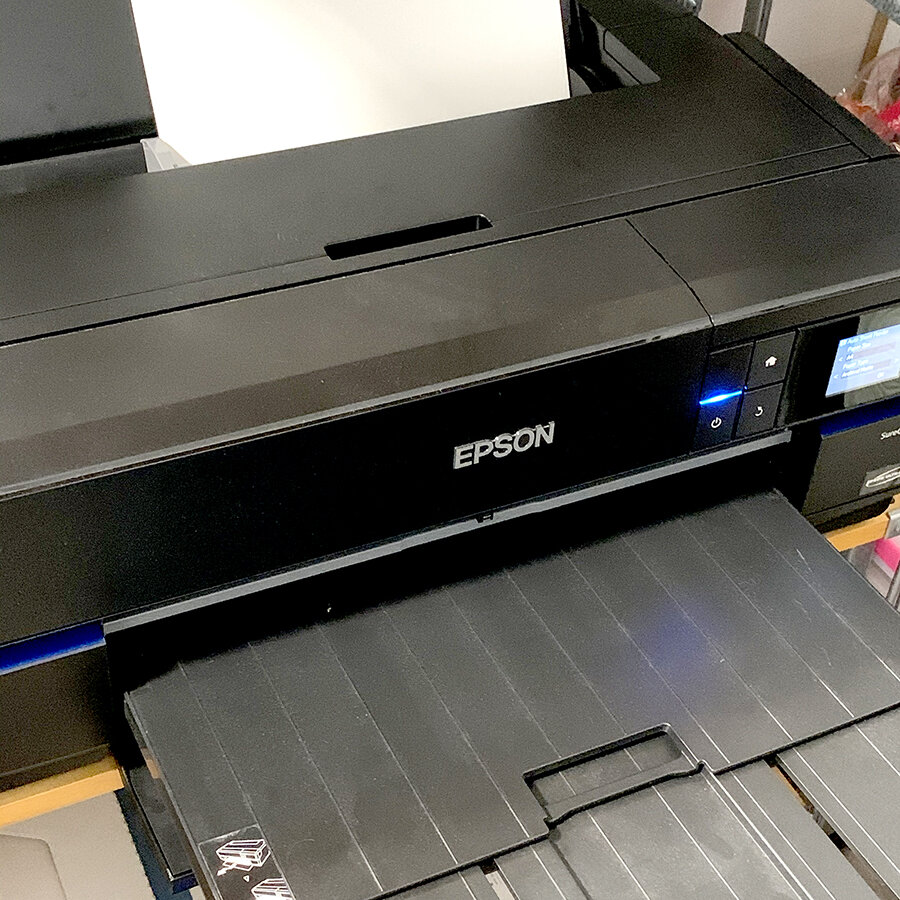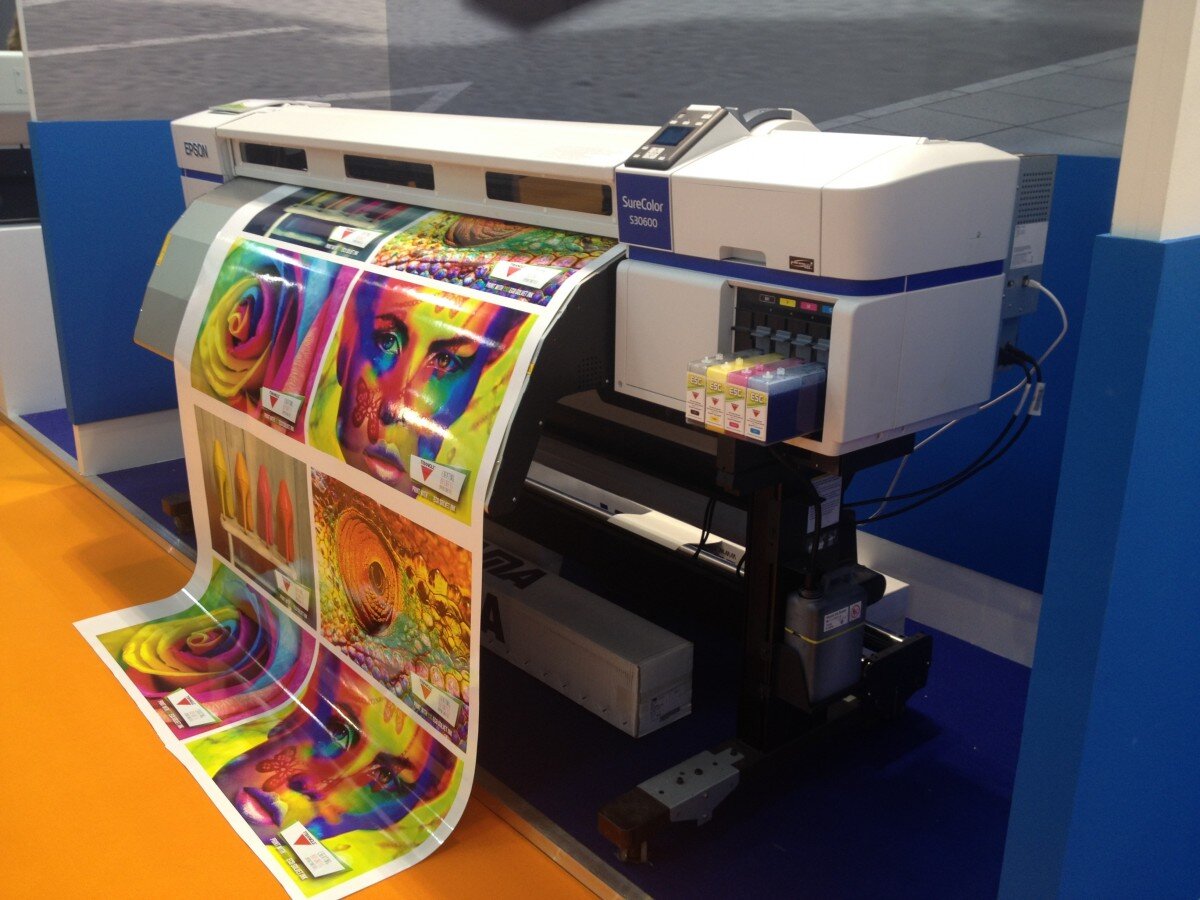What is a Giclée Print?
While browsing to buy art for your home, you might have come across the term giclée and wondered what it means. What is the difference between a giclée print and other art prints? We have put together a quick guide to giclée prints and what to look out for when buying a giclée print online, in a gallery or shop.
What is a giclée print?
The quick answer is: A giclée print is a high quality print produced using an inkjet printer.
The word giclée originates from the French word gicler (meaning to spray or squirt) and it is pronounced “ZHEE-CLAY”. The phrase ‘giclée print’ was originally coined in the 1980s, referring to prints made on a specific quality inkjet printer. The usage of the words has since shifted and nowadays the term refers to a print that has been produced using:
An Inkjet Printer,
High Quality, Fade-Resistant or Archival Inks
Quality Archival or Fine Art Papers
CMYK Colour process for vibrant large colour range.
The term is commonly used by artists to show the print is produced at much higher quality and cost than prints from your average desktop printer.
Giclée Print vs Art Print?
What is the difference between a giclée print and other prints?
The main difference between a Giclée print an other prints is quality, longevity and cost.
Quality
The quality of giclée prints is what makes them stand out from your average poster or cheap print. Some giclée prints are so realistic that they might even be mistaken for an original artwork! Inkjet printers use the CMYK (Cyan, Magenta, Yellow and Black) colour process to produce prints with a large colour gamut (the range of colours a device can reproduce). Professional inkjet printers will have more variation in their inks cartridges, with as many as 12 different colour variations, for smooth gradients and darker and nuanced blacks. The digital artworks used to produce the print should always have resolution of at least 300 dots per inch (DPI) for best quality.
Longevity
A good quality giclée print can last for 200 years! The longevity of a print will vary depending on what type of paper was used and of course the storage conditions. A framed print behind glass in normal conditions will probably last best part of a century. Pigment ink has a superior UV resistance and will last longer than dye-based inks (more about inks later)..
Cost
A giclée inkjet print is much more expensive to produce (per print) than other printing methods, for example four-colour offset lithography that is commonly used for large runs of posters and flyers. For example, a large scale giclée print can cost up to £50 to produce. There is a huge variation in the cost and quality of papers used for inkjet prints, with many different textures and finishes, such as matte photo paper, watercolour inkjet paper, cotton canvas and many more. The inks used for giclée printing are also expensive, a full set of inks for a high end printer will set you back hundreds of pounds.
What to look out for when buying a giclée print?
The term giclée is not regulated so there is no guarantee of quality when buying. For that reason it might be a good idea to get clued up and do some research before buying. If the print is expensive you might want to ask the seller some questions before buying to make sure you are getting a quality product.
Things to check when buying a Giclée Print
Printer
What type of inkjet printer was used to produce the print? Ideally it should be a professional large format printer. Epson and Cannon printers are industry leading for giclée printing.
Inks
What type of inks does the printer use? Inkjet printers use either dye based inks or pigment based inks. The gold standard for longevity is Pigment Inks. Pigment inks are more water resistant and longer lasting than dye base inks, though saying that, even high quality dye inks on the right paper, can last for a very long time. Epson’s UltraChrome HD Pigment inks and Cannon’s LUCIA PRO ink pigment ink system, will last for hundreds of years on the right paper and under the right conditions.
Paper
What type of paper is the artwork printed on? Is it archival paper, a specialist fine art paper or canvas specially made for inkjet printers? Epson, Hahnemuhle, St Cuthberts Mill all make excellent papers for quality inkjet printing.
Is it Signed or Limited Edition?
Signed art prints, adds that personal touch, while still being affordable. Limited edition prints tend to be more expensive, but might actually increase in value if the print run sells out. Buying a limited edition giclée print by an up-and-coming artist might be a good first art investment.
Giclée Print - Large Scale Inkjet Printer
What is the benefit of buying a giclée print?
Are giclée prints worth it?
One of the advantages to giclée prints is that artists can produce and sell their very own high quality prints, ‘on-demand’ or as part of a series, at more affordable prices. Giclée printing is also one of the most accurate ways of reproducing artworks. The print can look just as good as the original artwork! Another benefit of giclée prints is the longevity - they are museum-quality prints made to last. Buying prints form artists or in shop is a lovely way to get a unique piece of art with wonderful quality and a fraction of the cost of original art.
We think they are fantastic!
About our Giclée Art Prints
We use a professional large format Epson printer that can print up A2 size
We use UltraChrome HD Pigment Inks (Light Black, Light Light Black, Photo Black, Matte Black, Cyan, Light Cyan, Yellow, Vivid Magenta, Vivid Light Magenta)
We use Archival Matte Paper for all our art prints
All our art prints are signed by the artist
The original artwork is scanned at resolution of minimum 300 dots per inch (DPI)
Also
We print on demand to avoid waste
We plant a tree for every print sold



















